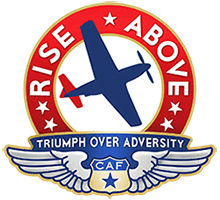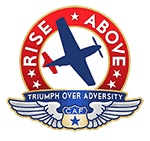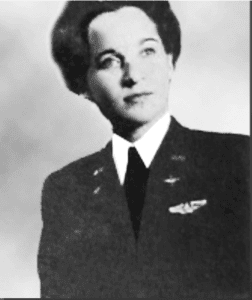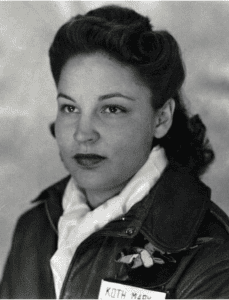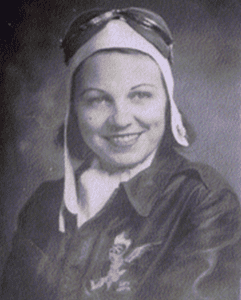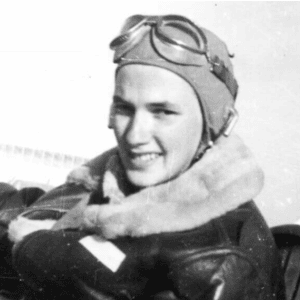Two weeks ago, the blog introduced readers to aviation pioneer Octave Chanute. His experiments and important discoveries prompted the U.S. government to name an airfield in Rantoul, Illinois after him within a decade of his death. Last week’s blog was about Rantoul’s Chanute Air Museum’s tribute to the men of the 99th Fighter Squadron, Tuskegee Airmen who trained as ground support crewmembers for the first black military pilots. Today’s blog is about some of the Museum’s other interesting and creative exhibits.
To help visitors understand the progression of changes at Chanute Air Base, which later became the Chanute Air Force Base, a main hall has a comprehensive timeline on its walls. Each segment contains photos and other samples of media, such as newspaper articles, from that era. It’s a great way to get your bearings before you start to explore the rest of the museum.
The museum has numerous rooms with specific themes. The room with exhibits urging remembrance of the POW/MIA experience is very moving. Another room features oil paintings of various base COs and other luminaries, including Tuskegee Airman Col. George “Spanky” Roberts, who was one of the five cadets to graduate in the first aviation training class at Tuskegee in 1942 and went on to command the 99th Fighter Squadron. After the military was desegregated in 1948, he was the first black officer to command a racially mixed unit.
Another room shows what a WWII Chanute mess hall looked like as well as a medical services set-up – including a dentist chair – and the Commander’s office. Yet another recalls the experiences of soldiers in Korea and plays an informative video loop about the war.
The hallways contain dioramas of the Chanute base at various times in its history, exhibits of various military unit badges and an amazing number of airplane models, built and contributed by various modelers. One unusual model that caught my eye was a fairly large (about 3 feet long) airframe built by a farmer in the 1920s out of scrap metal. This was obviously a man who had his feet in the soil, but his eye on the heavens!
 |
| The book on the lectern contains the models’ histories. |
A large room called “Barnstormers, Wing-walkers, and Entrepreneurs: 150 Years of Aviation in Illinois” is dedicated to Illinois aviation pioneers, including Bessie Coleman, Cornelius Coffey and Marcellus “Celly” Foose. Coleman was the first black woman to get a pilot’s license, Coffey was the first black man to establish an aeronautical school (more on him in a future blog – so interesting!) and Foose was a friend of Coffey’s for decades and owned the first sky-writing/advertising business in the country. Foose was an avid airplane builder and restorer and a number of his airplanes – including this 1941 Aeronica Chief – have pride of place in the room.
Foose designed the “Tiger Cat” and there is a large recreation of people working on the airplane in a barn. It is extremely detailed, down to the cat on the floor looking up at the partially completed airplane. Outside the “barn door,” other airplanes are lined up in the sunlight. The mural of the airplanes is beautifully painted and very realistic.
The history of the Chanute airfield has its ups and downs. No pun intended but one story that caught my eye was of Private Harold Osborn who was taking his parachute jump “final” in June, 1931 after weeks of training. Understandably anxious, he momentarily lost focus and pulled his ripcord before he was fully out of the airplane. His parachute got caught up in the tail section of the plane and he was left dangling below it.
 |
| Private Osborn’s predicament |
Using considerable skill, the pilot kept the airplane steady with the extra weight swaying in the breeze while folks on the ground worked to figure out how to rescue poor Harold. Their solution: send another airplane up and lower a knife down to him via a rope. Harold could then cut through the parachute’s cords and continue his jump, using his reserve chute to reach the ground softly. That scenario played out perfectly and the original jump plane also landed safely. After his adventure, Private Osborn opted to return to being an airplane mechanic, keeping his feet firmly on the ground in the future. Evidently the Army did not try and change his mind.
Next week’s blog will be the fourth and final segment of our tour of the Chanute Air Museum. No more models – we’re into the big airplanes now!
Back In Minnesota
Tomorrow, September 8th, the free RISE ABOVE Traveling Exhibit will be in Minneapolis for a one-day event. Hours are 11 a.m. to 6 p.m. It will be set up behind the Shiloh Temple International Ministries, 1201 W. Broadway, Minneapolis 55411. The Mustang is on hiatus until the Duluth Air Show on September 22-23.
Next Tuesday, the 11th, the Traveling Exhibit will be “up the road a piece” in St. Cloud, Minnesota where guests will be welcomed from noon until 7 p.m. daily thru Saturday, the 15th. It will be set up outside St. Cloud City Hall, 400-2nd Street South, 56301. Groups are invited to attend but to ensure a timely entry to the movie, it would be better if they were scheduled to arrive at a set time. To do that, contact Mamie Singleton by phone at 651-270-7266 or email at mamiesingleton302@gmail.com
Special event:
Tuskegee Airman James Cooper Event
On September 11 – the first day that the RISE ABOVE Traveling Exhibit will be open to the public in St. Cloud – Tuskegee Airman (and Buffalo Soldier) James Cooper will speak about his wartime experiences via a live stream from his home. The speech will start at 6:30 p.m. CDT and will be streamed to the St. Cloud City Hall and St. Cloud State College. For more information, please contact Mamie Singleton by phone at 651-270-7266 or email at mamiesingleton302@gmail.com
Countdown to the election: 60 days
The CAF Red Tail Squadron is a volunteer-driven 501c3 non-profit organization that operates under the auspices of the Commemorative Air Force. For more information, please visit redtail.org.
